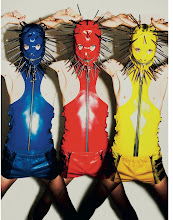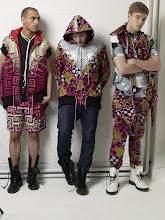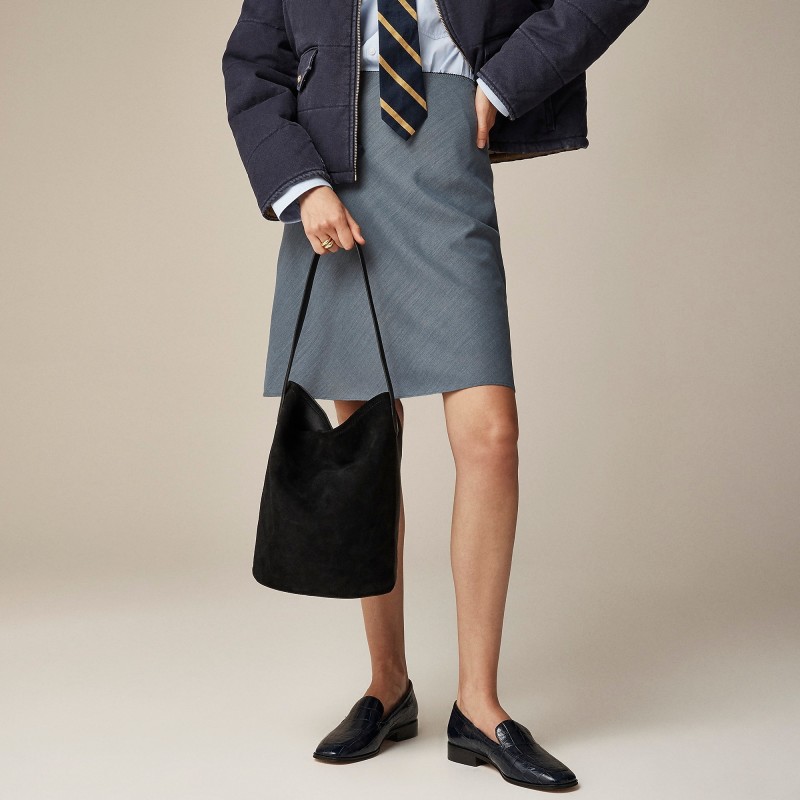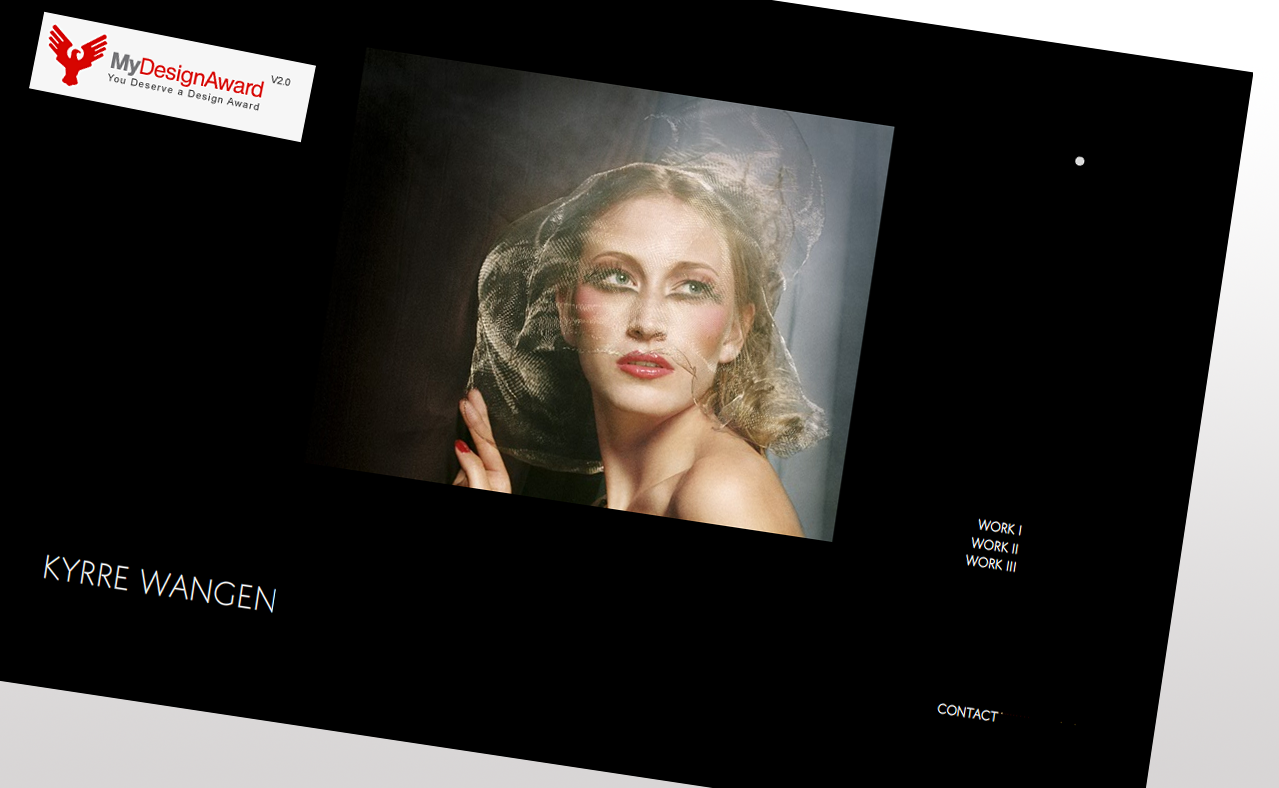There are fashion photographers who are artists yet use style bibles
and advertising campaigns for luxury houses as their gallery opposed to artists
working in fashion photography such as Ryan McGinley, Nan Goldin and Roe Ethridge
amongst others.
Yet there are those working exclusively
in fashion and fashion photography as their main medium. Names like Frederick Heyman, Tim Walker, Daniel Sannwald, Jason Evans & Damien Blotteire, come to mind In
the case of Sannwald, the image is usually constructed in his mind before it is
shot, and is manipulated in post-production to add elements to it, rather than
simply to perfect the model’s face or make the subject thinner. Blottière
similarly uses post-production add artistic elements to his work, whilst Jason
Evans starts out with an abnormal set-up for his shoots from the get go, through
the poses, lighting or subjects.
But
you only have to look at how these photographers are being embraced by the
industry in comparison with their more commercial contemporaries to realise
that fashion imagery has become too safe. It seems
its forefathers, such as Irving Penn and Richard Avedon, paved the way for
pushing boundaries and creating provocative, thoughtful and genius imagery,
only for the landscape now to be dominated by pictures that are fundamentally
quite simple and predictable in many aspects.
Mainstream
publications seem to shy away from allowing artists to create truly arresting
imagery. Editor of Husk magazine,
Trey Taylor, believes that commercial considerations
are the reason for this: ‘Fashion only survives because not everybody has it,
but everybody wants it. However, these relationships between photographer and
editor border on incest, with these ‘elite’ photographers recreating
predictable, jaded stories that the editors can depend on for filler, save for
ad pages.’
The
closest British Vogue comes to
embracing creative imagery is through the likes of Tim Walker. American Vogue could claim that of Annie
Leibovitz, who at times is able to create arresting imagery, yet predominantly remains
extremely safe. Taylor
Vogue has
its star names in photographers like Steven Meisel and Steven Klein. Meisel’s
work for Italian Vogue is often very
much of the times, such as his homage to Twitter and his celebrities in rehab,
as well as his work tackling harder-hitting topics like the Iraq
Rasharn
Agyemang, Fashion Director of RE-BEL,
feels the play-safe attitude is also present in other areas of the industry: ‘It
feels like it’s not just photography that has become safe, but fashion in
general: there are few individuals still willing to take risks and make people
dream. When I was growing up, there were the supermodels and Versace, further
on down the line Galliano, McQueen and Chalayan, and later on Gareth Pugh. I
don’t know any young designer that’s creating on these levels, yet thankfully
we have stylists like Nicola Formichetti, who inject fashion with a flair,
difference, creative energy, and who take the time to find new talent in design
and imagery.’
Both
Meisel and Klein are considered highly creative, yet you could question whether
they are ever really allowed to show their true creativity on the pages of the
magazines that feature their work. A typical example is the ‘Dogging’ story
created by Meisel for Italian Vogue
that was deemed to risqué, and found its way onto the pages of V magazine, one that embraces artistic
imagery. The simple fact is that creative directors for the big brands look to
photographers featured in larger publications for their future campaigns. These
are the clients who have the budgets that are now needed to produce, retouch, and
cast for the level of quality that is required. The smaller publications have modest
budgets in comparison to the might of a Condé Nast magazine – and yet they seem
to be the only environment in which a photographer is truly allowed to create.
Smaller,
independent publications allowed newer talent to flourish in the late 80s and
early 90s: Nick Knight, Wolfgang Tillmans, Juergen Teller, David Lachapelle and
Steven Klein all cut their teeth in magazines like i-D and The Face. But
many of those independent magazines have either closed or lost the spirit that
once defined them and made them unique. Many have caved into the commercial
demands and have compromised on artistic expression in a desperate fight to
please advertisers and keep themselves afloat. This means that few magazines allow
themselves the artistic freedom to risk working with younger names, and it remains
difficult for the next wave of talent to have their work published and
appreciated.
The
new generation of artists combats this through the internet, using blogs and
fashion websites such as Contributing
Editor and Ponystep, in which their
work can be seen outside of the printed page. Webzines and fashion magazine
websites allow for more opportunities to young artists, which they won’t get
from art directors and decision makers at places like Vogue and Harpers. Emerging
talent also benefits from magazines that are created by young people for young
people. Magazines like Hero and Husk show credibility and creativity,
yet remain commercially viable. Trey Taylor
Some
larger publications do push for artistic imagery: Interview and Dazed &
Confused are among the few doing so and have become known worldwide for it.
Interview has nurtured and supported
names such as Sharif Hamza, and Dazed
has allowed other new talent to shoot its front pages until they are ready to
shoot full editorials. Others who have been given this opportunity are Leon
Mark, Matthew Mumford, Fabien Kruszelnicki, and Alex Sainsbury. Damien Blottière
has also enjoyed exposure through Dazed,
dissecting the human form with his montages, as have Pierre Debusschere, whose
work resembles CCTV scans, and Ben Toms, with his muted tones and upfront
fashion portraiture.
However,
some feel that contemporary fashion photography is created by a select few,
with the landscape dominated by talent like Mert and Marcus, Mario Testino,
Craig McDean, David Sims, and even Steven Meisel and Steven Klein. These
big names repeatedly create editorials for the dominant glossy magazines, and
in turn create the adverts that are also on the same pages. It can be said that
fashion photography is informed by an elite few, and that a small group of photographers
shape how fashion imagery is consumed, through fashion magazines and through
mass-market advertising from a Times Square billboard down to a poster at a London
bus stop.
Every
magazine has its favourite photographers that they turn to time and time again,
comfortable with the fact that these image makers can create what is needed.
Even RE-BEL has its own roster of trusted
younger names (including Christian Oita, Ben Weller, Damien Blottière and
Daniel Sannwald), yet we understand the importance of continuing to nurture
newer talent such as Fabien Kruszelnicki, Cameron Alexander and Willem Jaspert.
We must nonetheless maintain a commercial outlook, and be wary of becoming too
abstract.
Opportunities
for true creativity are largely given to art photographers rather than fashion
photographers. These projects give a publication art kudos and a cover name to
help sales, but can overlook the talents of pure fashion photographers, instead
giving more exposure to art photographers, who may have the opportunity to
generate income from other sources – a luxury that fashion photographers do not
have.
The
power to change always lies with the next generation. With stylists like Robbie
Spencer, Katie Shillingford and Anna Trevelyan willing to take risks and
produce pictures that encourage artistic freedom for the photographer, and with
magazines like Husk, Dazed & Confused and Interview still willing to nurture and
publish young and artistic names, there is hope that fashion photography will
remain a respected art form.











.pdf+-+Adobe+Reader.bmp)











































.png)











































-3.jpg)


































No comments:
Post a Comment